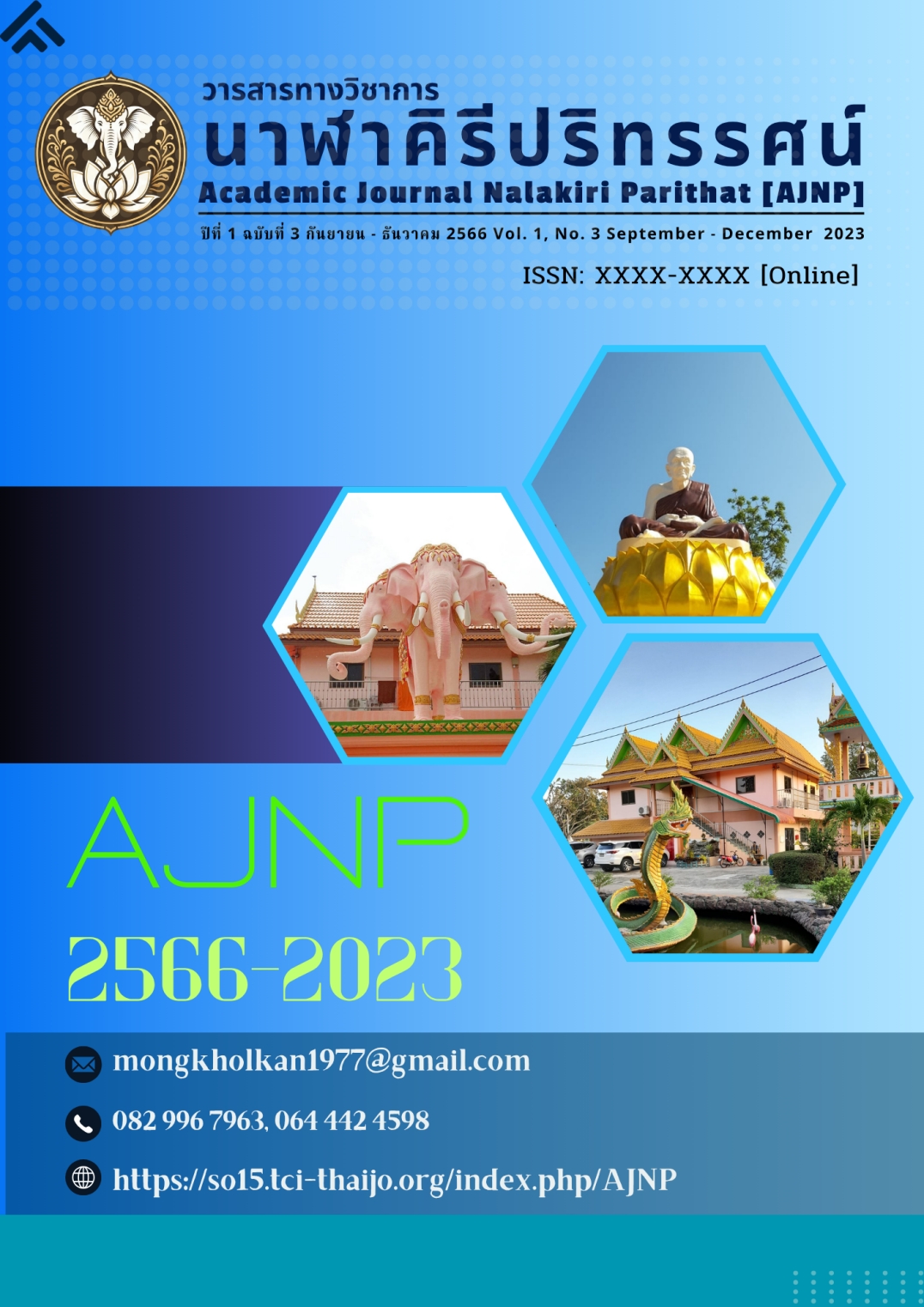PRINCIPLES OF INTERPRETATION IN THE NETTIPAKARAN SCRIPTURES
Keywords:
Nettipakaran, Mahakaccayana, interpretation, commentary, conceptAbstract
Nettipakarana is the name of a scripture in Theravada Buddhism, composed by Venerable Mahakaccayana Thera, a great disciple who was recognized as the best in elaborating and simplifying the meaning. He had a broad vision and was concerned about Buddhism, thinking that in the future, it would be difficult to find someone who could understand the Buddha’s words of Pali and be as knowledgeable in the Tipitaka as he is today. Therefore, he wished to leave his work to preserve the Buddha’s teachings for the long term by composing a book on the principles of explaining and elaborating the Buddha’s words to be evidence so that those interested in Buddhism could understand the teachings they had heard or studied and could understand them clearly and could thoroughly understand the Four Noble Truths. Therefore, he composed a scripture on this subject, giving it the name Netti, and presented it to the Lord Buddha for consideration. The Lord Buddha approved it. He also composed another scripture of this type, the Petakopdesapakorn. For this reason, he was praised as the best in this area.
The word Nettipakorn means a guidebook and a book leading to the attainment of Dhamma. It means that it is a book that deals with the path leading to knowledge and understanding of the Buddha's words and is a book that deals with principles or methods leading to the attainment of the truth, leading to the attainment of Nirvana. This Nettipakorn is a book that explains and expands on the Buddha's words with principles. It organizes topics, classifies, and separates the content into sections, making it easy to understand. Some scholars praise it as a book that is at the level of the Pali or Tripitaka, but it also has characteristics similar to an commentary because it is a book that explains and expands on the Buddha's words like a general commentary. This Nettipakorn is considered the first version of the commentary, which has been around since the time of the Buddha. It is a prototype for the composition of commentaries, commentaries, and commentaries on the Buddha's words later.
References
กีรติ บุญเจือ. (2551). การตีความคัมภีร์ในปรัชญาตะวันตก. กรุงเทพฯ: สวนสุนันทา.
ปรุตม์ บุญศรีตัน. (2550). รูปแบบการตีความคัมภีร์ในพระพุทธศาสนาเถรวาท. กรุงเทพฯ: มหาจุฬาลง
กรณราชวิทยาลัย.
ปรีชา บุญศรีตัน. (2567). รูปแบบศาสตร์แห่งการตีความเชิงปรัชญาในคัมภีร์ธัมมปทัฏฐกถา. กรุงเทพฯ:
มหาจุฬาลงกรณราชวิทยาลัย.
พระคันธสาราภิวงศ์. (2550). คัมภีร์เนตติปกรณ์. กรุงเทพฯ: ไทยรายวันการพิมพ์.
พนารัตน์ จันทร์สิทธิเวช. (2560). วิเคราะห์การตีความหลักพุทธธรรมของเชอเกียมตรุงปะ. กรุงเทพฯ:
มหาจุฬาลงกรณราชวิทยาลัย.
พระมหาสมบูรณ์ วุฑฺฒิกโร. (2548). ศาสตร์แห่งการตีความแนวพุทธ. กรุงเทพฯ: มหาจุฬาลงกรณราช
วิทยาลัย.
วีรชาติ นิ่มอนงค์. (2559). เฮอร์เมนูติกส์ : ศาสตร์แห่งความเข้าใจของพระพุทธปรัชญาเถรวาท
และมหายานเชิงเปรียบเทียบ. กรุงเทพฯ: มหาจุฬาลงกรณราชวิทยาลัย.
Downloads
Published
How to Cite
Issue
Section
License
Copyright (c) 2025 Academic Journal Nalakiri Parithat

This work is licensed under a Creative Commons Attribution-NonCommercial-NoDerivatives 4.0 International License.



